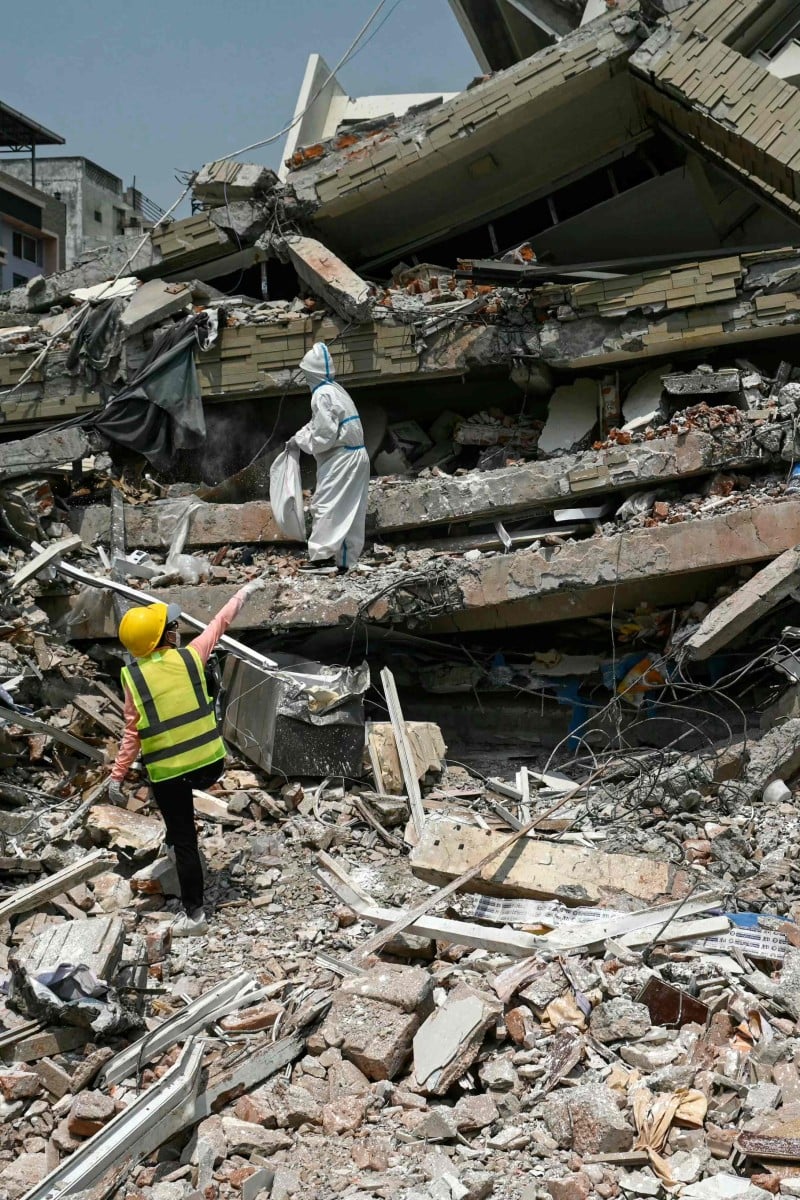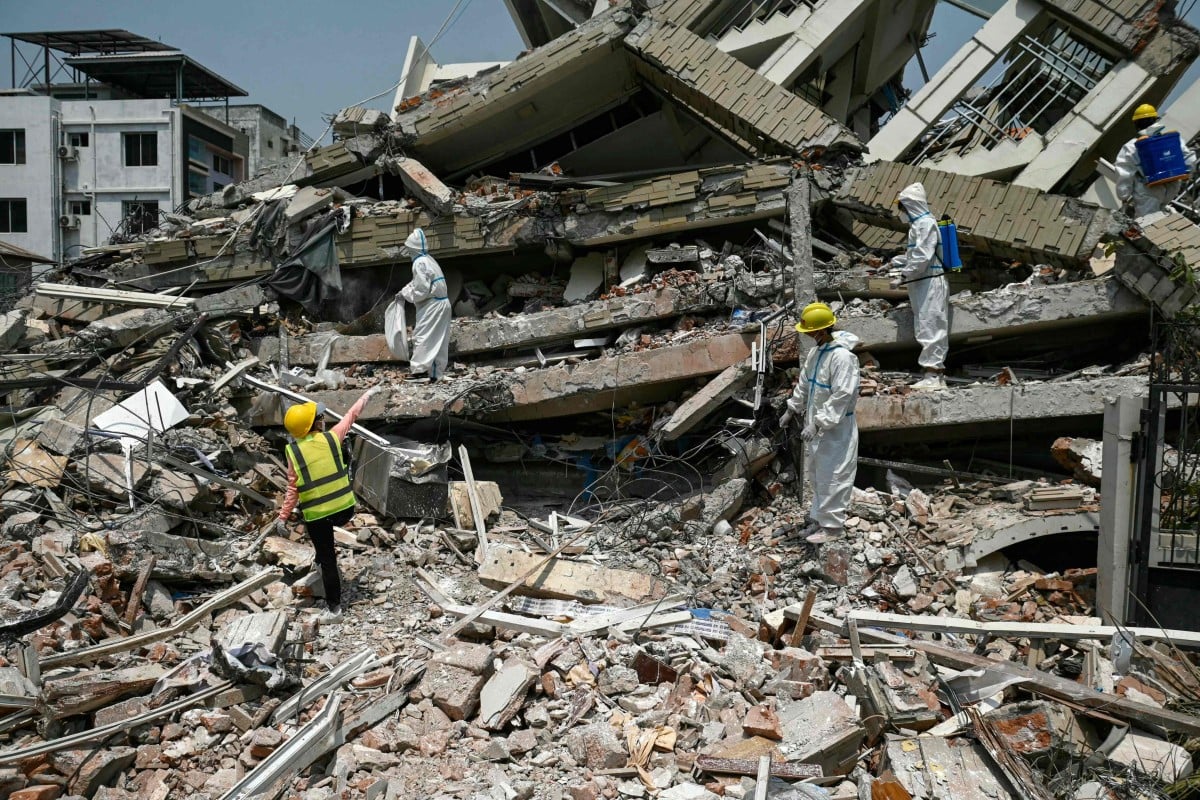
Myanmar’s 7.7-magnitude quake raises concerns over infrastructure in seismic regions
Experts urge the government to enforce building codes as poorly-constructed buildings can lead to more fatalities, economic losses
 Myanmar’s recent earthquake, potentially the largest in decades, highlights the vulnerability of the country’s infrastructure. Photo: AFP
Myanmar’s recent earthquake, potentially the largest in decades, highlights the vulnerability of the country’s infrastructure. Photo: AFPExperts say the devastating earthquake in Myanmar last month was likely the strongest to hit the country in decades.
Automatic assessments from the United States Geological Survey (USGS) said the shallow 7.7-magnitude quake northwest of the central Myanmar city of Sagaing triggered a red alert for shaking-related fatalities and economic losses.
Bill McGuire, emeritus professor of geophysical and climate hazards at University College London (UCL), said it was “probably the biggest earthquake on the Myanmar mainland in three-quarters of a century”.
Rebecca Bell, a tectonics expert at Imperial College London (ICL), suggested it was a side-to-side “strike-slip” of the Sagaing Fault. This is where the Indian tectonic plate, to the west, meets the Sunda plate that forms much of Southeast Asia – a fault similar in scale and movement to the San Andreas Fault in California.
“The Sagaing Fault is very long, 1,200 kilometres (745 miles), and very straight,” Bell said. “The straight nature means earthquakes can rupture over large areas – and the larger the area of the fault that slips, the larger the earthquake.”
Earthquakes in such cases can be “particularly destructive”, Bell added.
She explained that since the quake takes place at a shallow depth, its seismic energy has dissipated little by the time it reaches populated areas above. That causes “a lot of shaking at the surface”, Bell said.
Powerful quakes have hit Myanmar in the past.
There have been more than 14 earthquakes with a magnitude of 6 or above in the past century, including a magnitude 6.8 earthquake near Mandalay in 1956, said Brian Baptie, who is a seismologist with the British Geological Survey.
Ian Watkinson is from the department of earth sciences at Royal Holloway University of London.
According to Watkinson, what had changed in recent decades was the “boom in high-rise buildings constructed from reinforced concrete”.
“Critically, during all previous magnitude 7 or larger earthquakes along the Sagaing Fault, Myanmar was relatively undeveloped, with mostly low-rise timber-framed buildings and brick-built religious monuments,” Watkinson said.
“[This] earthquake is the first test of modern Myanmar’s infrastructure against a large, shallow-focus earthquake close to its major cities.”
Baptie said that at least 2.8 million people in Myanmar were in hard-hit areas where most lived in buildings “constructed from timber and unreinforced brick masonry” that are vulnerable to earthquake shaking.
“The usual mantra is that ‘earthquakes don’t kill people; collapsing infrastructure does’,” said Ilan Kelman, an expert in disaster reduction at UCL.
“Governments are responsible for planning regulations and building codes. This disaster exposes what governments of Myanmar failed to do long before the earthquake, which would have saved lives during the shaking.”
The 10 deadliest quakes of the 21st century
Why do buildings move during an earthquake?
Most collapses are not generally caused by the earthquake itself. Rather, when the ground moves beneath a building, it shifts the foundation of its lower levels.
This sends shock waves through the building’s upper levels, causing it to move back and forth.
How much a building sways depends on a few things:
Weight: Heavier buildings, especially those with more weight at the bottom, can sway more.
Stiffness: Stiffer buildings resist bending and swaying better.
Height: Taller buildings are generally less stiff and sway more than shorter buildings.
The way a building is designed and built is crucial. Including some earthquake-resistant designs can help a building absorb the earthquake’s energy and reduce how much it sways (see graphic).